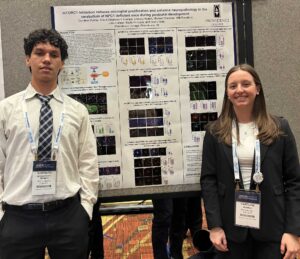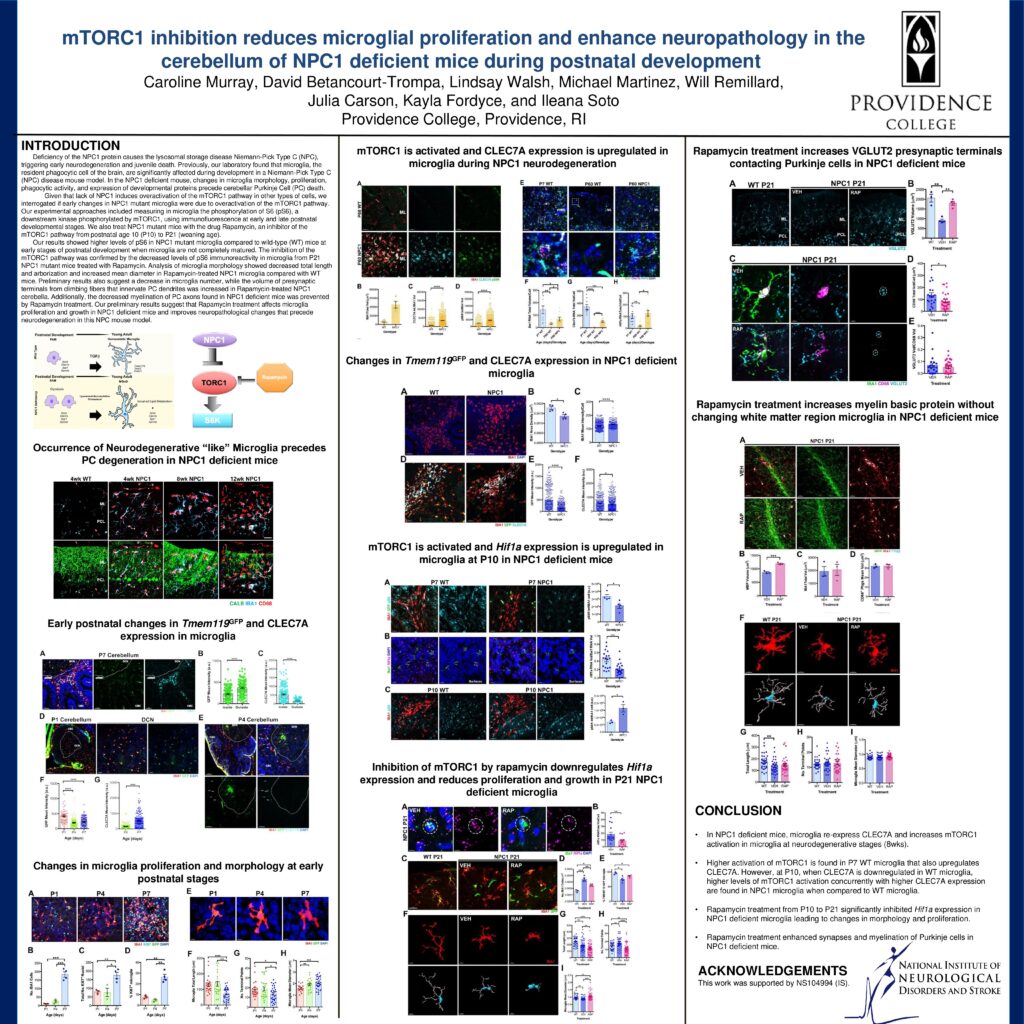Caroline Murray ’25, Michael Martinez ’25 and David Betancourt ’27

mTORC1 inhibition reduces microglial proliferation and enhance neuropathology in the cerebellum of NPC1 deficient mice during postnatal development
Caroline Murray ’25, Neuroscience major
Michael Martinez ’25, Biology major
David Betancourt ’27, Biology major
Faculty mentor: Dr. Ileana Soto Reyes, Neuroscience
Deficiency of the NPC1 protein causes the lysosomal storage disease Niemann-Pick Type C (NPC), triggering early neurodegeneration and juvenile death. Previously, our laboratory found that microglia, the resident phagocytic cell of the brain, are significantly affected during development in a Niemann-Pick Type C (NPC) disease mouse model. In the NPC1 deficient mouse, changes in microglia morphology, proliferation, phagocytic activity, and expression of developmental proteins precede cerebellar Purkinje Cell (PC) death. Given that lack of NPC1 induces overactivation of the mTORC1 pathway in other types of cells, we interrogated if early changes in NPC1 mutant microglia were due to overactivation of the mTORC1 pathway. Our experimental approaches included measuring in microglia the phosphorylation of S6 (pS6), a downstream kinase phosphorylated by mTORC1, using immunofluorescence at early and late postnatal developmental stages. We also treat NPC1 mutant mice with the drug Rapamycin, an inhibitor of the mTORC1 pathway from postnatal age 10 (P10) to P21 (weaning age). Our results showed higher levels of pS6 in NPC1 mutant microglia compared to wild-type (WT) mice at early stages of postnatal development when microglia are not completely matured. The inhibition of the mTORC1 pathway was confirmed by the decreased levels of pS6 immunoreactivity in microglia from P21 NPC1 mutant mice treated with Rapamycin. Analysis of microglia morphology showed decreased total length and arborization and increased mean diameter in Rapamycin-treated NPC1 microglia compared with WT mice. Preliminary results also suggest a decrease in microglia number, while the volume of presynaptic terminals from climbing fibers that innervate PC dendrites was increased in Rapamycin-treated NPC1 cerebella. Additionally, the decreased myelination of PC axons found in NPC1 deficient mice was prevented by Rapamycin treatment. Our preliminary results suggest that Rapamycin treatment affects microglia proliferation and growth in NPC1 deficient mice and improves neuropathological changes that precede neurodegeneration in this NPC mouse model.
Poster Presentation: Wednesday, April 23, 11 a.m. – 12:30 p.m.






